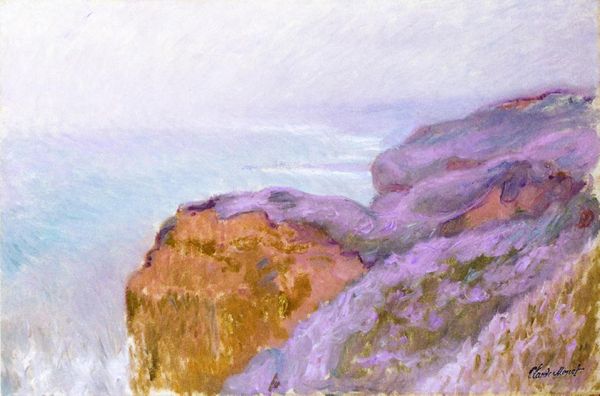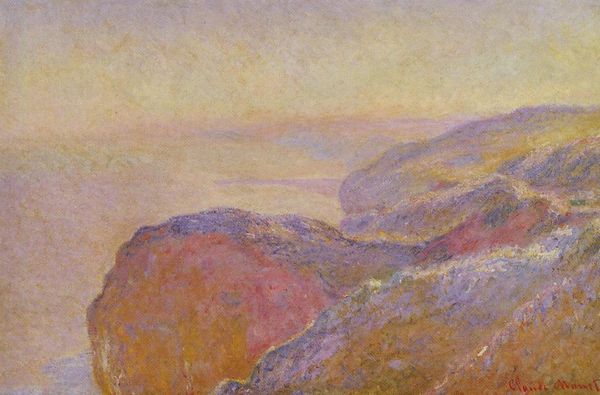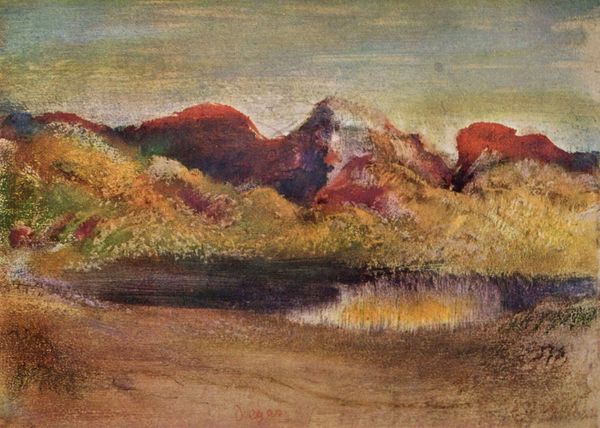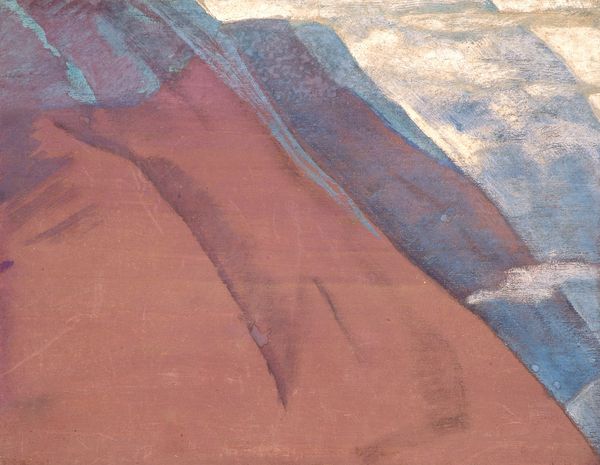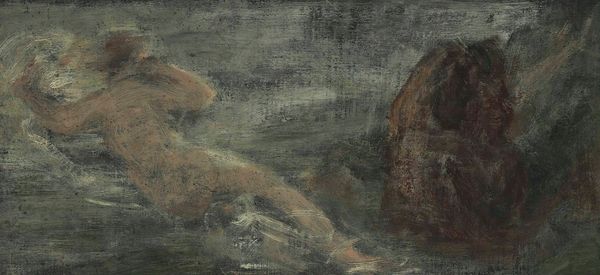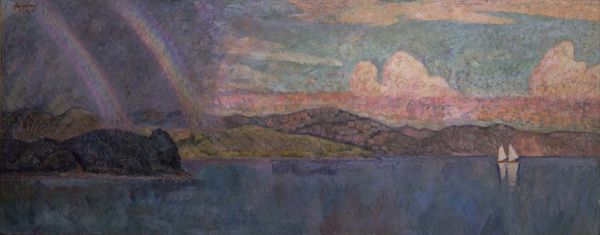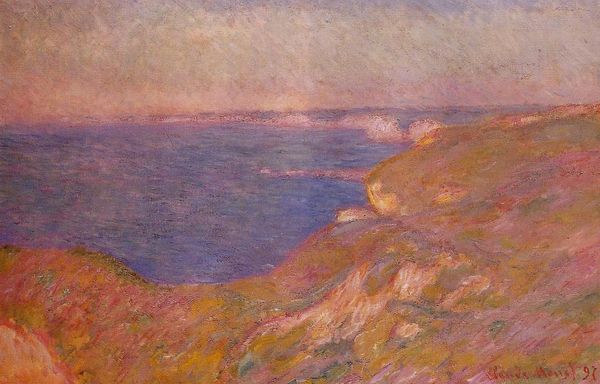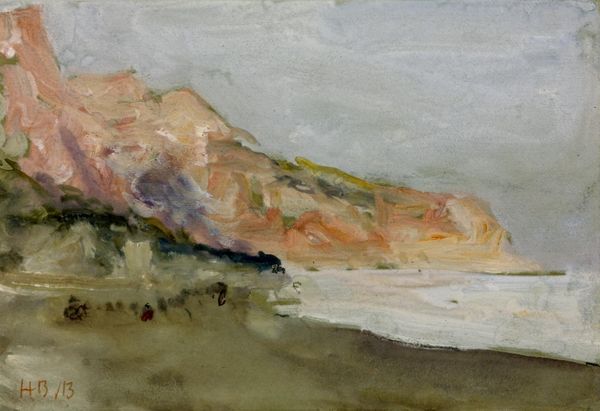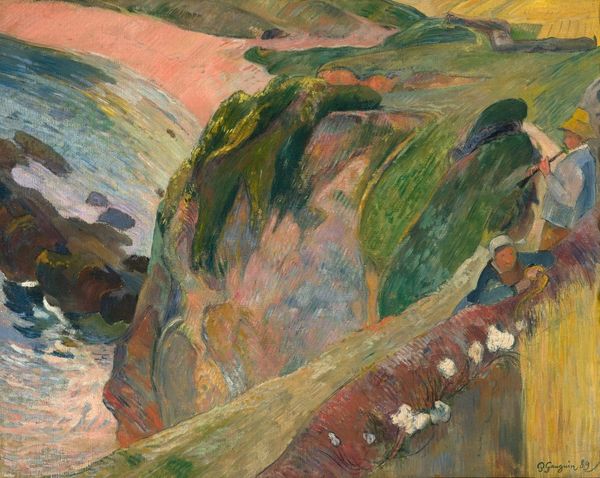
Copyright: Public domain
Claude Monet painted "Cliff at Petit Ailly, at Varengeville" in 1882 using oil on canvas. The prominent visual symbol is the imposing cliff itself, a motif that has echoed through art history, representing steadfastness, solitude, and the sublime power of nature. Consider Caspar David Friedrich's "Chalk Cliffs on Rügen," where similar cliffs evoke feelings of awe and introspection. The cliff, a border between earth and sea, becomes a stage for human drama and a symbol of existential contemplation. This border, between the safety of land and the threatening sea, has been present through time, and its visual representation can be traced back to ancient Greek and Roman depictions of the edge of the world. The cliff in Monet’s painting, rendered with vibrant yet grounded colors, may engage viewers on a deep, subconscious level, stirring primal fears and an appreciation for the earth’s formidable presence. Thus, this image resonates beyond its aesthetic qualities, tapping into a collective memory that links us to past fears.
Comments
No comments
Be the first to comment and join the conversation on the ultimate creative platform.


